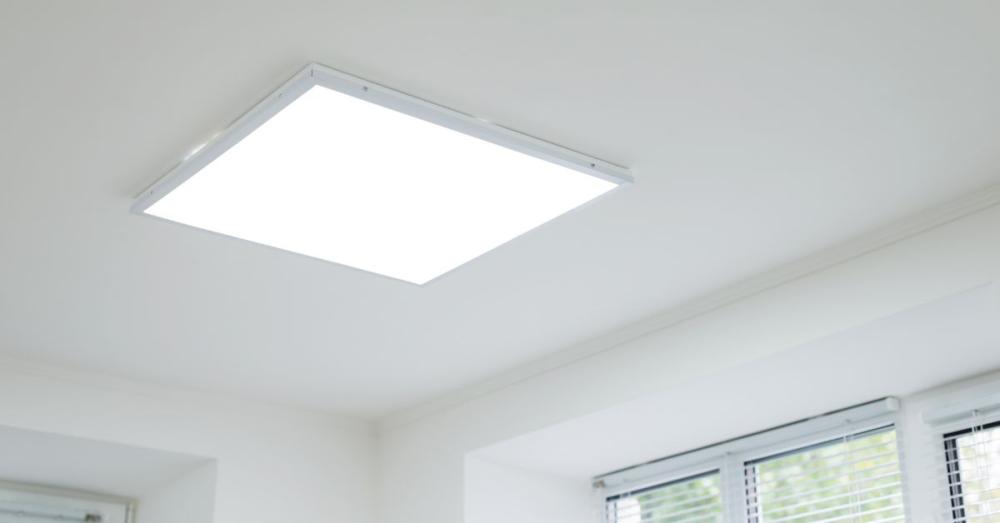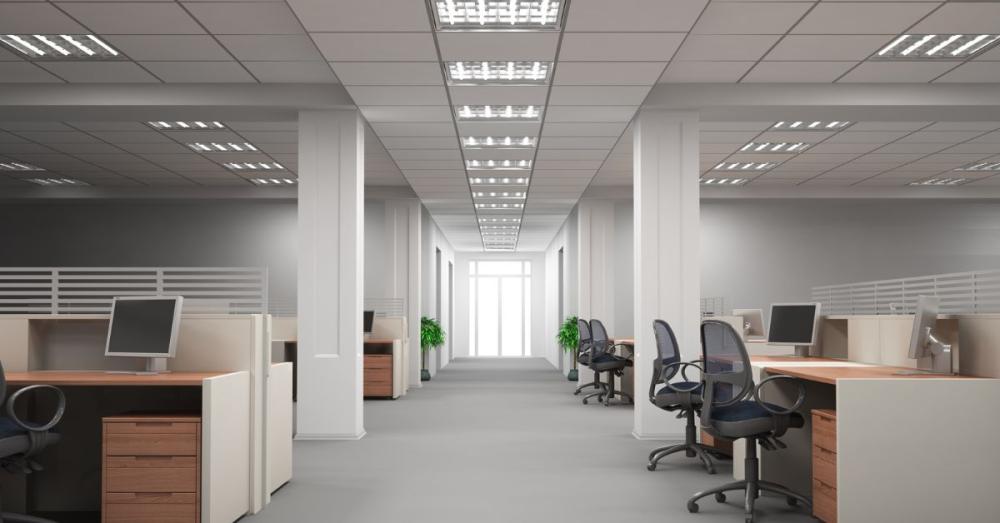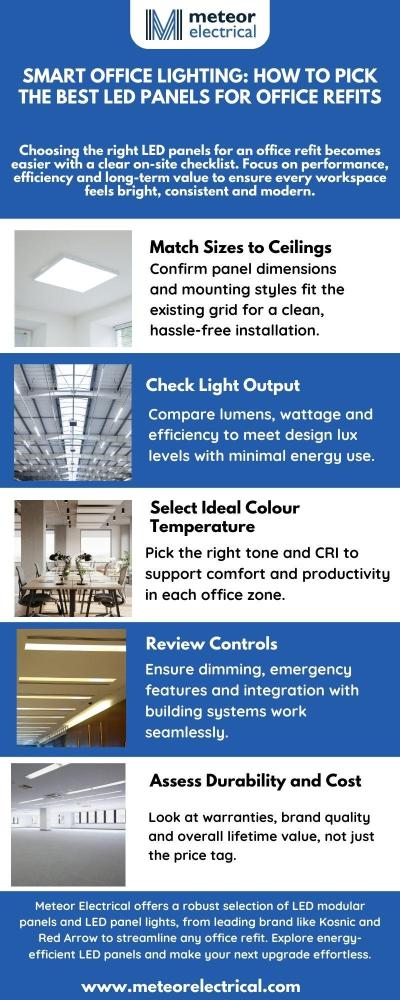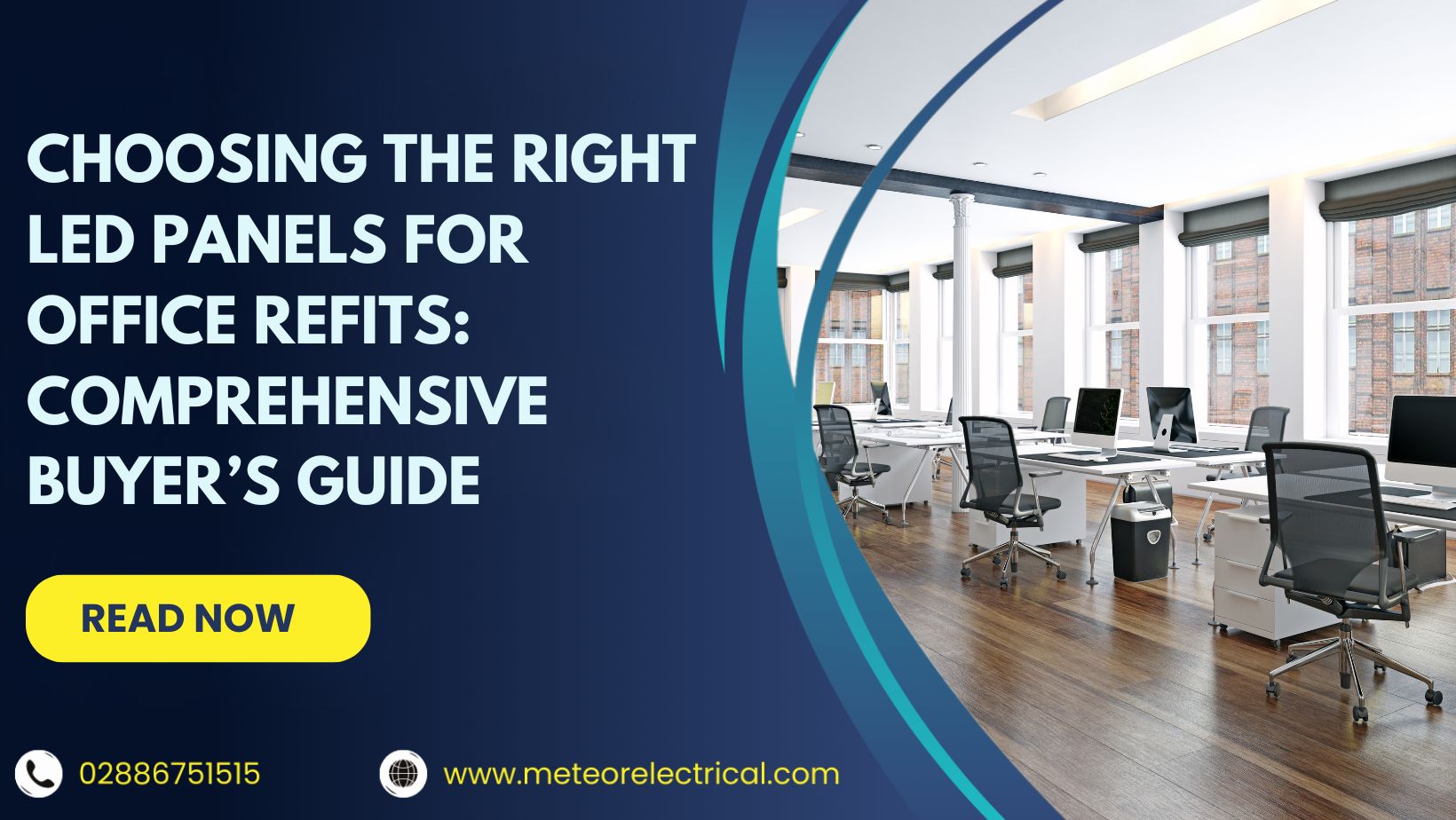Choosing the Right LED Panels for Office Refits: Comprehensive Buyer’s Guide
Choosing the Right LED Panels for Office Refits: Comprehensive Buyer’s Guide
On most modern projects, upgrading to LED panels is now the standard route for office refits because they cut running costs and refresh tired spaces. Industry bodies report that lighting can account for around 15–20% of a typical commercial building’s electricity use, and LED solutions can reduce that lighting load by up to 60–80% compared with older fluorescent systems, which is a big win for clients’ energy bills.
For electricians and facilities managers, the key is choosing reliable, fast-fit replacements for old T5 or T8 recessed modular fittings in existing grid ceilings without creating headaches on site.
What are LED Panels and How Do They Work?

LED panels are slim, flat luminaires that use an array of light emitting diodes behind a diffuser to produce an even sheet of light rather than bright spots. LED modular panels are built to drop into standard 600 x 600 or 1200 x 600 ceiling grids, giving like-for-like footprints with far better efficiency and control than traditional recessed fluorescents.
LED panel lights typically include an aluminium frame, optical guide plate and quality driver so they can deliver high lumen output, long life and stable operation.
Source - Meteor Electrical
Types of LED Ceiling Lights Used in Offices
There are a few core types of LED Ceiling Lights used in office and commercial lighting, each suited to different ceiling constructions and design priorities:
- Recessed LED panels: For 600 x 600 or 1200 x 600 suspended grid ceilings in standard offices and classrooms.
- Surface-mounted kits: Installed where there is no ceiling void or where you are fixing to solid plasterboard or concrete.
- Suspended LED Light Panels: For exposed soffit designs, creative studios or spaces where fittings double as a design feature.
- Edge-lit panels: These have LEDs around the perimeter and a light guide plate, offering slim profiles suited to low ceiling voids.
- Back-lit Modular LED panels: Come with LEDs directly behind the diffuser, giving high efficiency and very uniform light, ideal for open-plan offices and deeper rooms.
Understanding LED Colour Temperature for Workspaces

LED colour temperature describes the visual “warmth” or “coolness” of the light, usually in the 3000–5000 K range for commercial spaces. Getting this right improves comfort, supports tasks and keeps different areas of the building feeling consistent and professional.
Warm white around 3000 K suits receptions, lounges and informal breakout zones where a softer feel is welcome. Neutral white at about 4000 K is the default choice for most offices and meeting rooms, while cooler 5000 K can help in design studios, detailed inspection areas or locations that benefit from a crisper, daylight-style tone.
Office Refits Buying Advice for Electricians and Facilities Managers
Before you commit to a product list, walk the site and confirm ceiling types, grid sizes, wiring routes, existing circuit loads, emergency coverage and any controls strategy. Match LED panels to 600 x 600 or 1200 x 600 grids where possible, and plan where you need recessed, surface or suspended solutions to avoid ad-hoc adaptations on the day.
When comparing products, prioritise energy-efficient LED panels with strong lumens-per-watt performance, good-quality drivers and a solid manufacturer warranty. Standardising on a small family of panels across projects reduces design time, simplifies spares and lowers the risk of compatibility issues.
How to Choose the Right LED Panel for Office Refits?

When shortlisting products, keep a simple on-site checklist in mind so decisions stay quick and consistent:
- Panel size and mounting style to suit the existing ceiling grid or structure.
- Lumen output, wattage and lumens-per-watt to achieve design lux efficiently.
- Preferred LED colour temperature and CRI for each zone of the office.
- Dimming, emergency options and controls compatibility for the project specification.
- Warranty length, brand reputation and total cost of ownership, not just unit price.
Standardising on one or two families of energy-efficient LED panels across multiple projects saves time on design, speeds up installation and simplifies spares stocking for maintenance teams.
Best Practices Electricians Should Follow
A bit of design work up front leads to smoother installs and fewer call-backs once the office is occupied. Use the following best practices before ordering and during installation.
- Calculate target lux levels for open-plan areas, meeting rooms and corridors, then size LED panels to meet those figures rather than guessing.
- Lay out panels in regular grids that align with workstations, helping to avoid bright spots and dark patches.
- Use low-glare or UGR-rated LED panel lights in screen-heavy spaces to reduce reflections on monitors.
- Plan dimming or presence sensors where appropriate to trim energy use and improve comfort in flexible spaces.
- Keep a record of driver types, controls protocols and emergency circuits so future maintenance is straightforward.

Common Mistakes to Avoid on Site
Even experienced installers can fall into a few traps when switching from fluorescents to LED modular panels on refits. Avoiding the pitfalls below protects your margins and your reputation with clients.
- Matching the old fluorescent wattage instead of checking lumens and photometric data on the new LED panels.
- Mixing different LED colour temperatures in the same open-plan zone makes spaces look patchy and unprofessional.
- Forgetting dedicated emergency versions or remote emergency kits where regulations require compliant escape lighting.
- Choosing low-cost panels with weak warranties and poor drivers that may flicker, discolour or fail early.
- Overlooking ceiling compatibility, leading to extra cutting, framing or adapter plates that add labour on site.
Conclusion: Smarter LED Panel Choices with Meteor Electrical
If you assess space, match LED panels to the ceiling, choose the right colour temperature and check performance and warranty up front, most office refits become straightforward and predictable. For facilities managers who want dependable commercial lighting products and responsive support, Meteor Electrical provides in-stock range of LED modular panels, from leading brands such as Kosnic and Red Arrow, compatible accessories and practical advice for office projects so your next refit feels like a smooth upgrade rather than a risk.
FAQs
1. What size LED panels are best for office ceilings?
For most suspended grid ceilings, 600 x 600 LED panels are the standard choice. Use 1200 x 600 panels in larger open areas or long corridors where wider modules help you cover more space with fewer fittings.
2. Which LED colour temperature is best for office work?
If in doubt, go for 4000 K neutral white for general office and meeting rooms. Reserve warmer 3000 K for lounges or reception, and cooler 5000 K for specialist task areas that need a daylight style look.
3. How many LED panels do I need for my office refit?
Measure the room, set a target lux level, then choose panel wattage and spacing to meet that number. Avoid guessing based on the old fittings as output and distribution are very different with LEDs.
4. Are energy-efficient LED panels worth the extra cost?
Yes. More efficient panels use less power every hour, so over thousands of hours, they usually repay the small extra upfront cost and then keep saving money.
5. Do I need dimmable or smart LED ceiling lights in an office?
Not everywhere, but they are a smart choice for meeting rooms, flexible spaces and areas with uneven occupancy. Extra control there improves comfort and quietly trims your energy use.

